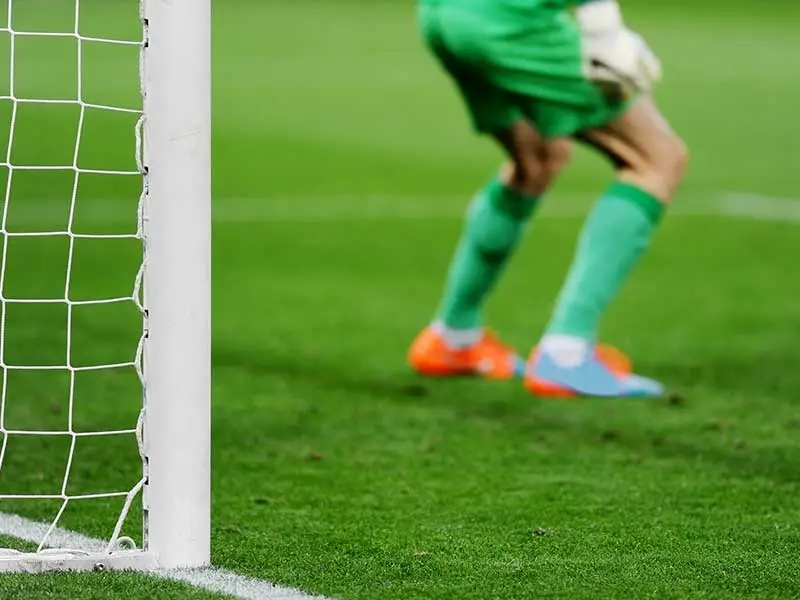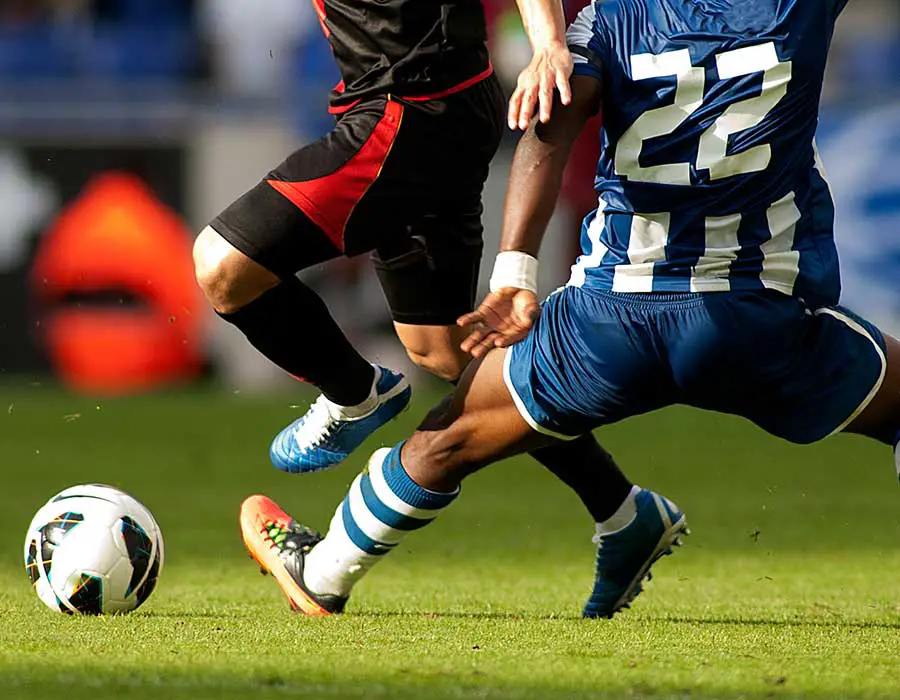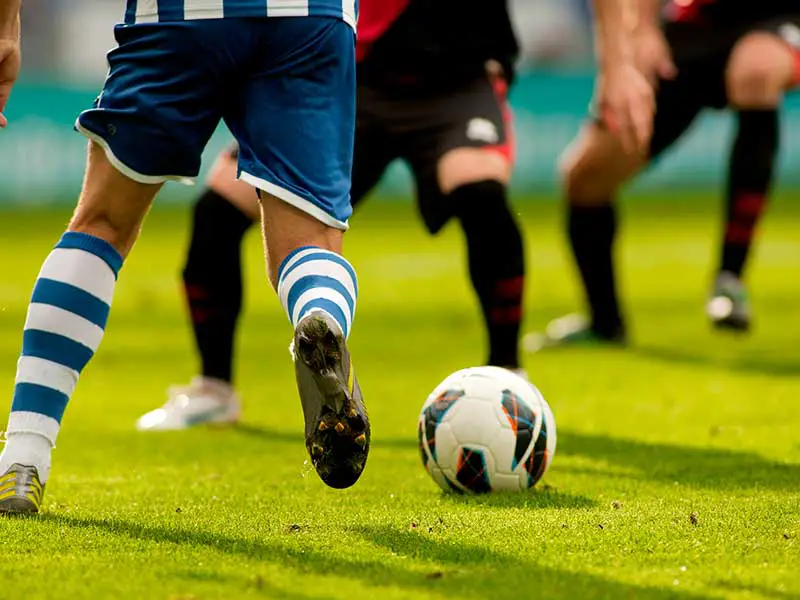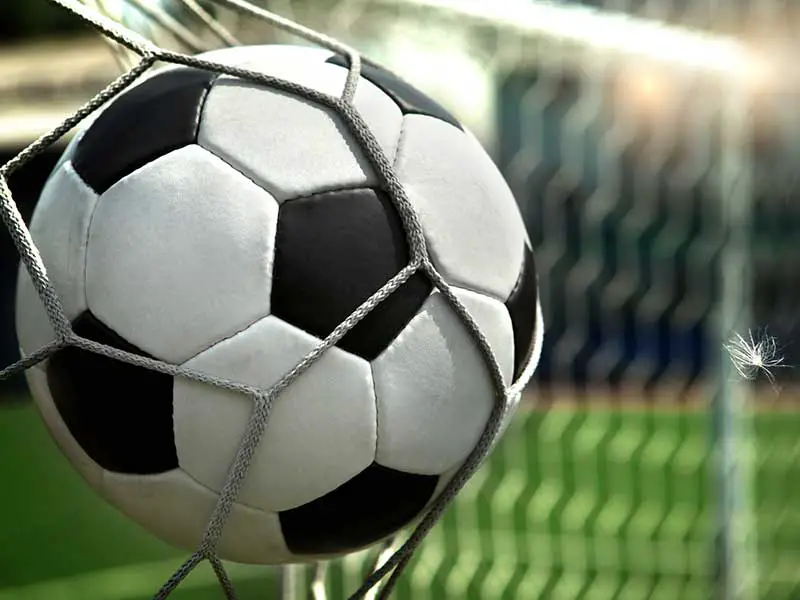The Most Important Position in Soccer
Like in any other sport, soccer has many different positions and roles. The number of all possible positions/roles is even higher than 11, which is the total number of players a team can start a game with.
Suppose we group everything up into four main positions. In that case, we will notice that every soccer team has a goalkeeper, several defenders, midfielders, and attackers.
What would be the most important out of those four, though?
To answer this question, we will have to look at each of the four main positions and see what each consists of. Then, we will pinpoint the majority of the roles in each position and decide whether that role is the most vital one.
Keep in mind that people can be quite subjective with any popular sport and argue that some positions are more important than others. In this article, we will try to be as objective as possible and give a bigger picture of why certain positions are more important than others – and which one is actually the most vital one.
So, without that in the way, let’s get into it.
Goalkeepers
Many people would argue that a team is as good as its goalkeeper. There are many instances in which a team is somewhat “carried” by its own goalkeeper – a good and relatively recent example being Jan Oblak. A defensively-oriented Atletico Madrid relies on its defenders, especially their star player, the Slovenian international.
As much as forwards are a focal point among many regular soccer enthusiasts, having consistent numbers of goals and assists sometimes is not sufficient to get those valuable points. That’s where goalkeepers shine.
There haven’t been more critical positions than goalkeepers and defenders in Atletico’s case, especially in Diego Simeone’s era.
Are goalkeepers generally the most important on the field, then? – As much as it might hurt some of our readers, we believe that goalkeepers, as vital as they are, are not the most important position on the field.

Defenders
As world-famous Sir Alex Ferguson would say, “Attack wins you games. Defense wins you titles”. The statement is as relevant as it was more than three decades ago when Sir Alex Ferguson became one of the most prominent coaches (or managers, depending on where you’re from) in the history of soccer.
Another excellent example of good defense would be the aforementioned Atletico Madrid, especially in the past ten to fifteen years – the Diego “Cholo” Simeone era. There is probably not a single more famous “park-the-bus” team than the Colchoneros. Some might even argue that Atletico Madrid, or Cholo Simeone, to be more exact, perfected the tactic of keeping the clean sheet at all costs.
The defensive position could be split into two main categories:
- Centre-backs
- Full-backs
As you can see from the name, centre-backs are centrally-oriented defensive players whose main job is to keep a clean sheet (don’t concede any goals) by helping their goalkeeper and being the most crucial defensive figure on the field. Former Manchester United legend Nemanja Vidić and current Liverpool star Virgil van Dijk are excellent examples.
Full-backs are not as defensively-oriented as their central counterparts. They also have some offensive duties (center-backs only being in the attacking phase during corner kicks). A full-back is usually a more offensively-oriented player in modern soccer, especially if deployed as a wingback. Many wingbacks are powerhouses of their respective teams, but as good as Manchester City’s João Cancelo is, he is still not the focal point of Pep Guardiola’s unstoppable force.
Are defenders the most important players on the field, then?
As much as the defense is essential in any team, we do not believe that a centre-back or a full-back is the most important position in soccer. As much as it is vital to keep a clean sheet and score a point, defenders can’t quite carry the rest of the team in the same way midfielders or forwards can.

Midfielders
This is where it gets interesting. As in the previous paragraph, we can also split the midfield into several positions and assign specific roles. The midfield being a bit more complex than the defense. Here we have defensive, offensive, central, and wide positions, such as CM (central midfielder), CDM (central defensive midfielder), CAM (central offensive midfielder), LM (left midfielder), and RM (right midfielder).
As strange as it may seem, there are even far more “subcategories” when it comes to the midfield, but to keep it quite simple, we will focus on only one position in the midfield – the CM. The hands-down best example of a world-class CM would be Croatia’s Luka Modrić – the complete midfielder.
The 2018 Golden Ball winner has been a vital part of Real Madrid’s squad, winning three consecutive Champions League titles in 2016, 2017, and 2018. Being somewhat disregarded as a world-class player earlier in his career, Modrić has proved many times that we probably haven’t seen a midfielder as influential as the Croatia national soccer team captain in the past 20 years.
Why does a CM like Modrić have a huge impact?
First of all, midfielders are usually the ones who need to possess both defensive and offensive skills. Their task is to maintain control of the central part of the field. They need to help both their defenders and their forwards to manage that. Modrić excels at this since he is almost as good at holding the ball as he is at being a playmaker. He is the one who has both the best successful pass percentage and the most passes completed in almost every game.
If you are a Fantasy soccer player – you probably remember Modrić during his time at Tottenham Hotspur. Even though it was frustrating to see a low number of goals and assists by a creative midfielder, it was evident that Modrić was one of the biggest names on Harry Redknapp’s squad.
Are midfielders the most important, then?
Short answer – yes. A bit longer answer – definitely yes.
A good midfielder can cover for both the attack and the defense. That’s why, for example, a world-class CM can make an average striker a bit-more-average-one. The creativeness and the importance of those players could not be emphasized enough.

Forwards
If you are only somewhat familiar with soccer, before clicking on this article, you probably thought to yourself – “well, I don’t really have to go through this – a forward is the most important position in soccer.” I would be a bit harsh to say that you were wrong, but as we mentioned in the paragraph above, a good midfield makes a good forward.
“But what about Messi? He is a forward, right?”. The answer to that is, yes, he is a forward. But, as vital as he was for Barcelona in the previous decade, keep in mind that he was playing as a false nine for quite some time. If you’re not familiar with the term, a false nine is a striker who drops into the midfield to start the attacking phase from the center of the field. So you could say that he was also some sort of a midfielder, right?
He also had two world-class defenders behind him – current Barcelona coach Xavi, and another Spanish icon, Iniesta. The two Barcelona legends are some of the best playmakers we’ve seen in the past 15-20 years – slightly overshadowed in the previous paragraph by Modrić, who is arguably a more complete player – mostly because of his defensive abilities.
Forwards are also split into several positions that have different roles. Again, to keep it simple, we have wingers – RW and LW (left and right), strikers or STs, centre-forwards or CFs (they tend to play a bit behind the forward depending on the strategy and the formation).
Their main task, as previously mentioned, is to score goals and sometimes provide assists. There are, of course, cases in which forwards don’t have the highest numbers in those categories but are good enough to act as a distraction or are creative. But when it comes to scouting, there’s not a more important number than having a huge number of goals – not enough goals – not good enough for the team.

The summary
As mentioned in the paragraph regarding the midfield, we still stay behind the statement that midfielders are the most important players on the field. Without a solid midfielder, the whole team looks average and can’t defend or attack properly. They are the ones who make all the difference and the ones who claim the title in this comparison.
